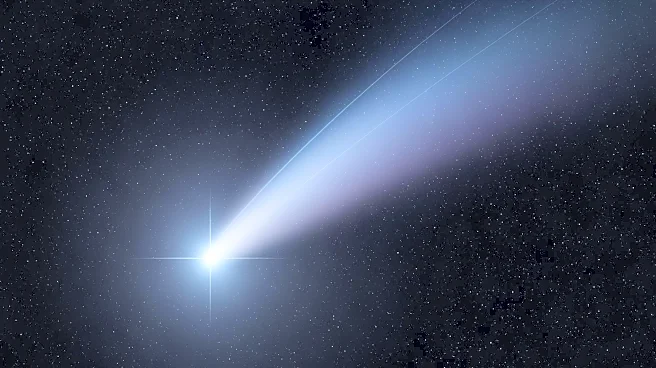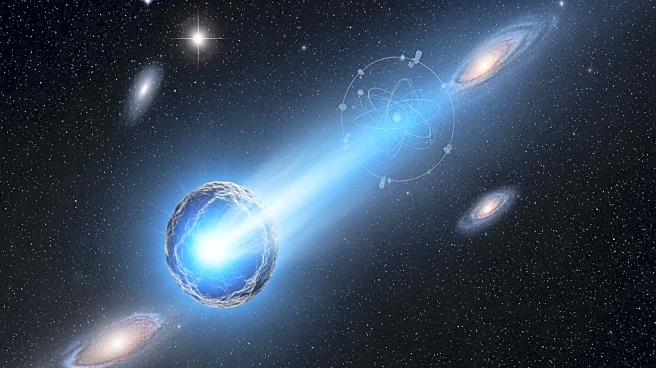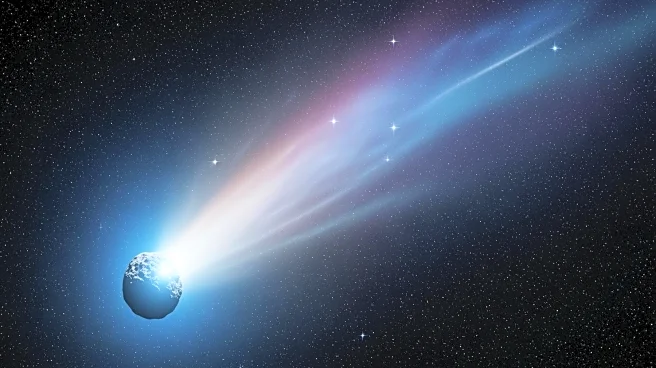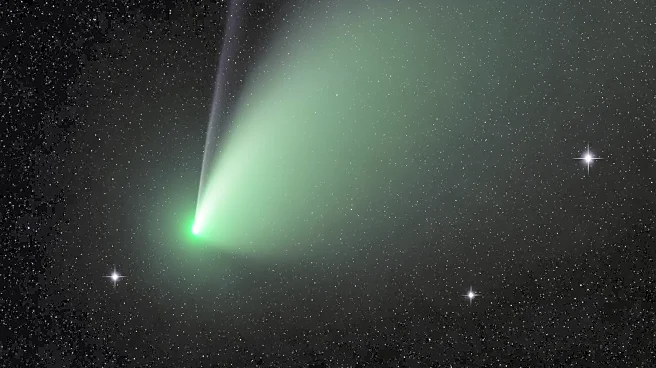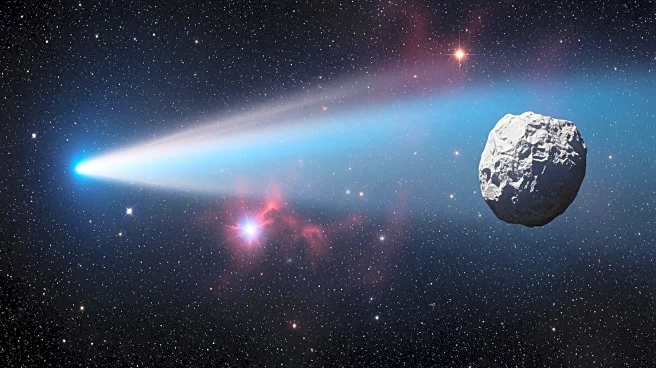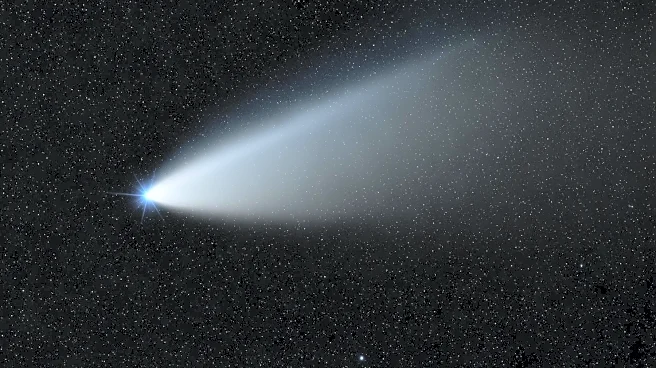What's Happening?
Interstellar comet 3I/ATLAS, discovered on July 1, 2025, by the ATLAS telescope in Chile, is set to reappear in the eastern sky before dawn on November 11, 2025. This comet is only the third confirmed
interstellar object to visit our solar system, following 'Oumuamua and 2I/Borisov. The comet recently completed its closest approach to the Sun, known as perihelion, on October 30, and is now moving away. It is on a hyperbolic orbit, meaning it is not gravitationally bound to the Sun and will continue its journey into deep space.
Why It's Important?
The reappearance of 3I/ATLAS offers a once-in-a-lifetime opportunity for observation, as it will never return to the solar system. Scientists from NASA and ESA are closely monitoring its trajectory to deepen their understanding of interstellar material, potentially revealing insights into how planets and solar systems form in other parts of the galaxy. The comet's composition, largely frozen water, carbon compounds, and dust, typical of natural comets, is being studied using instruments aboard ESA's JUICE spacecraft.
What's Next?
The comet is expected to become visible again around November 11, 2025, appearing in the eastern sky before dawn. However, a large telescope is required for observation. Live tracking is being provided through several online astronomical observatories, with NASA, ESA, and university-led telescope networks offering live stream feeds and real-time sky maps. Scientists hope to coordinate data collection with ESA's JUICE and NASA's Europa Clipper missions to further study the comet's composition and origin.
